How can you get a great workout in a limited amount of time or while you are facing a tight schedule for the week? There isn’t a “hack” or “secret” to getting healthier and making your fitness routine as efficient as possible. However, one of the most effective ways is to focus on compound exercises that train several muscle groups at once. And if these can be isotonic strength training movements that offer up constant resistance through an isotonic contraction, then you are well on your way to a great workout in a shorter amount of time.
Plus, if you don’t have a gym membership or are interested in creating your own home gym, you don’t need a whole lot of equipment to do isotonic compound strength training exercises. Read further down below in the article and to know exactly what equipment you should be seeking out.
What Exactly Is an Isotonic Contraction?
The word “isotonic” can appear to be a bit overwhelming at first to those who don’t remember their high school biology class.
When breaking apart the word, recognize that “iso” means same or equal.
“Tonic” is referring to the tension.
When used in relation to strength training, an isotonic contraction means equal tension throughout the rep as our muscle changes in length.
As an example, think of the simple yet essential arm strengthening exercise, the dumbbell curl. An awesome exercise for bigger biceps. There is constant but equal pressure throughout the whole movement. If you are curling a 30-pound dumbbell, you will be using slightly more than 30 pounds of tension to curl it up towards you and lower it back to the starting position. With an isotonic contraction, you are basically producing more tension from within your muscles throughout the whole rep than the weight you are lifting.
There are two types of isotonic contractions, but you are virtually going to use both of these types while doing an isotonic strength training exercise.
When the muscle shortens, as you are curling your arm up in a dumbbell curl, this is called a concentric contraction.
As the muscle lengthens, such as when you are lowering the dumbbell back down to your side, this is an eccentric contraction.
Just remember that flexing causes a concentric contraction and, again, while lowering that weight to your side, there is still constant tension as your muscle lengthens during the eccentric contraction.
The more constant tension during a strength training exercise, the better muscle-building results you will experience.
Isotonic Compound Exercises to Add to Your Strength Training Program
These isotonic compound exercises will provide you plenty of bang for your buck.
Deadlifts
Deadlifts are said to work just about every muscle group in your body. If you can remember the first time you completed a bunch of sets of this compound exercise, you probably believe it since there is no doubt you were sore the next day.
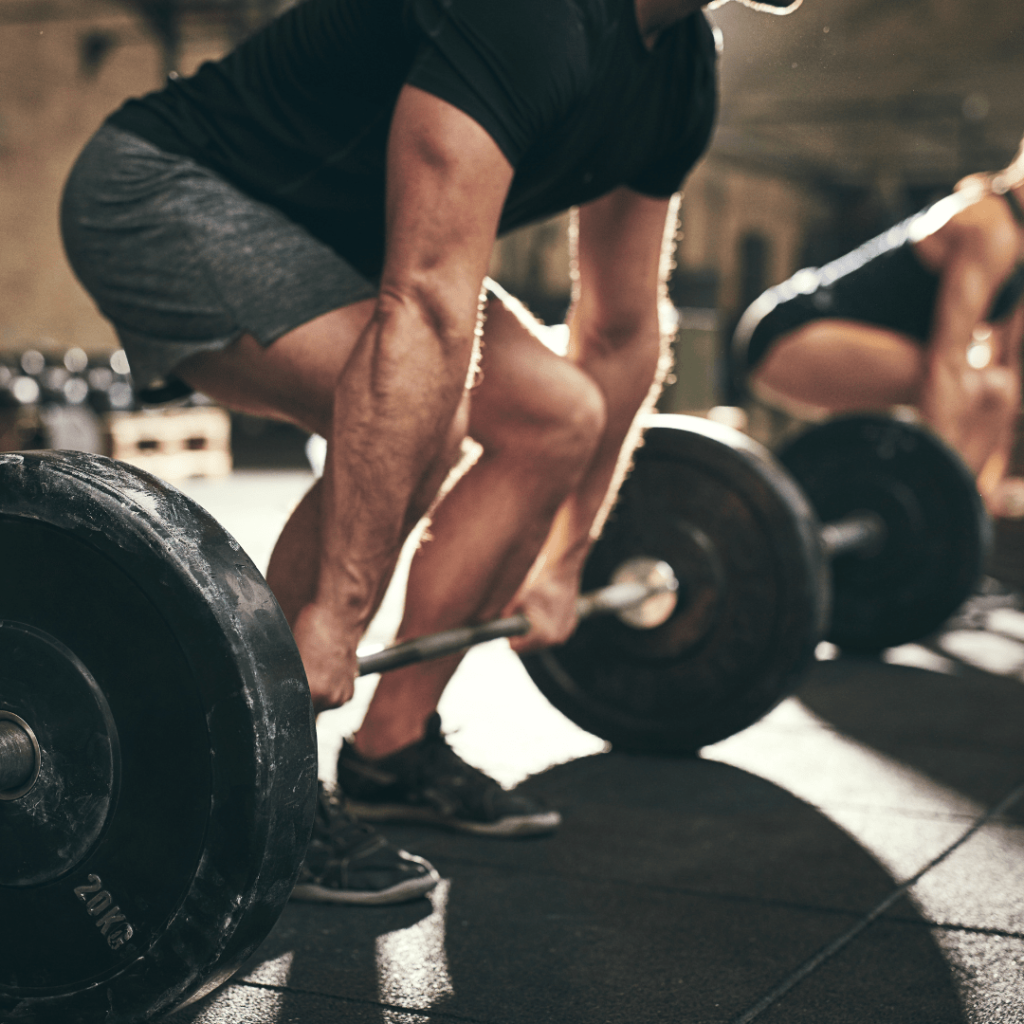
Throughout the movement, there is constant tension in the legs, arms, core, and back. Sure, you place the weight down on the floor for a nano-second after each repetition, but that really does not ease the resistance for much time at all. If you are short on time, or just want to speed up your workout by knocking out several muscle groups at once, the deadlift is for you.
Proper form is crucial for this exercise as you can really hurt yourself if you are trying to lift too much. It always seems that once too much weight is added to the equation, form gets thrown out the window. Keep your feet shoulder-width apart, choose the grip you want on the bar (whether it is overhand, underhand, or a combination of the two), keep your back as straight as possible, engage your core and remember to breathe. You do not want to end up on YouTube as one of those guys that pass out after doing a deadlift because they were holding their breath.
Barbell Military Press
Back in the day, the barbell military press was a staple exercise for almost everyone who was doing strength training. The squat rack was just as busy with people doing barbell military presses as they were with people actually doing squats. For some reason, as the years went by, gym-goers started doing them less and less. It’s their loss.
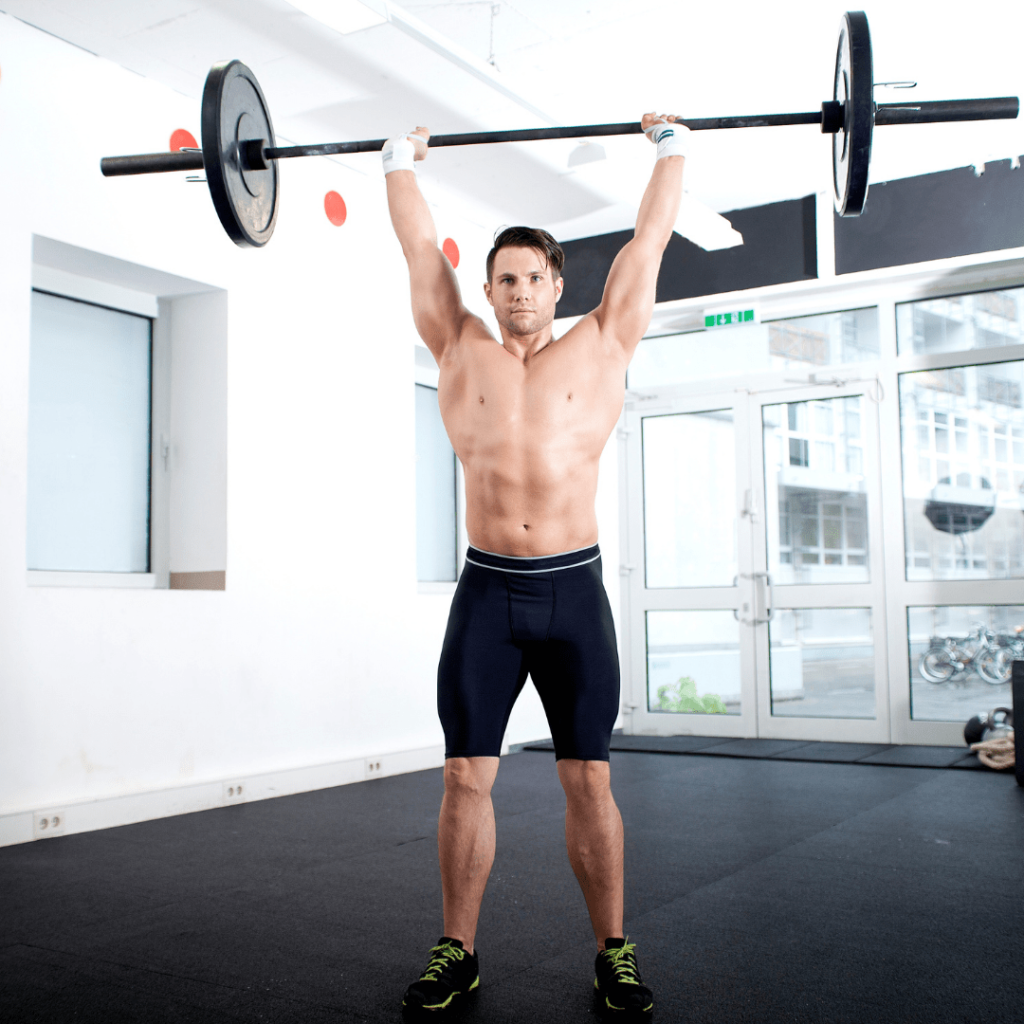
The barbell military press is a great isotonic compound exercise as it trains the shoulders, back, core, and triceps. Plus, since you are standing during this movement, it does work the legs and stability muscles as well. There is constant tension throughout the movement and with the number of muscles it is working at once, this exercise really needs to make a deserved comeback.
When performing this exercise, have your feet shoulder-width apart so you are establishing a solid base, place your hands on the bar a bit further out than shoulder-width, and then push upward while keeping your core tight. Control the weight well. The last thing you want to do is get wobbly with more weight than you can handle hovering over your head.
Barbell Bench Press
Doesn’t it seem like Mondays are usually barbell bench press day for quite a number of fitness fanatics? You walk into a gym Monday after work and every bench seems to be getting used and there is a line for who is going next. This is because the barbell bench press is one of the most popular strength training exercises, and you guessed it, it is an isotonic compound movement.
Of course, this exercise works the chest, so if you want to put some meat and definition on your upper body, this movement is a perfect one to do it. But it also hits the triceps, core, and the front of the shoulders. Plus, just like pushups do, the bench press trains the back as well. You need a solid back to be able to control that weight hovering over top of you as it goes up and down.
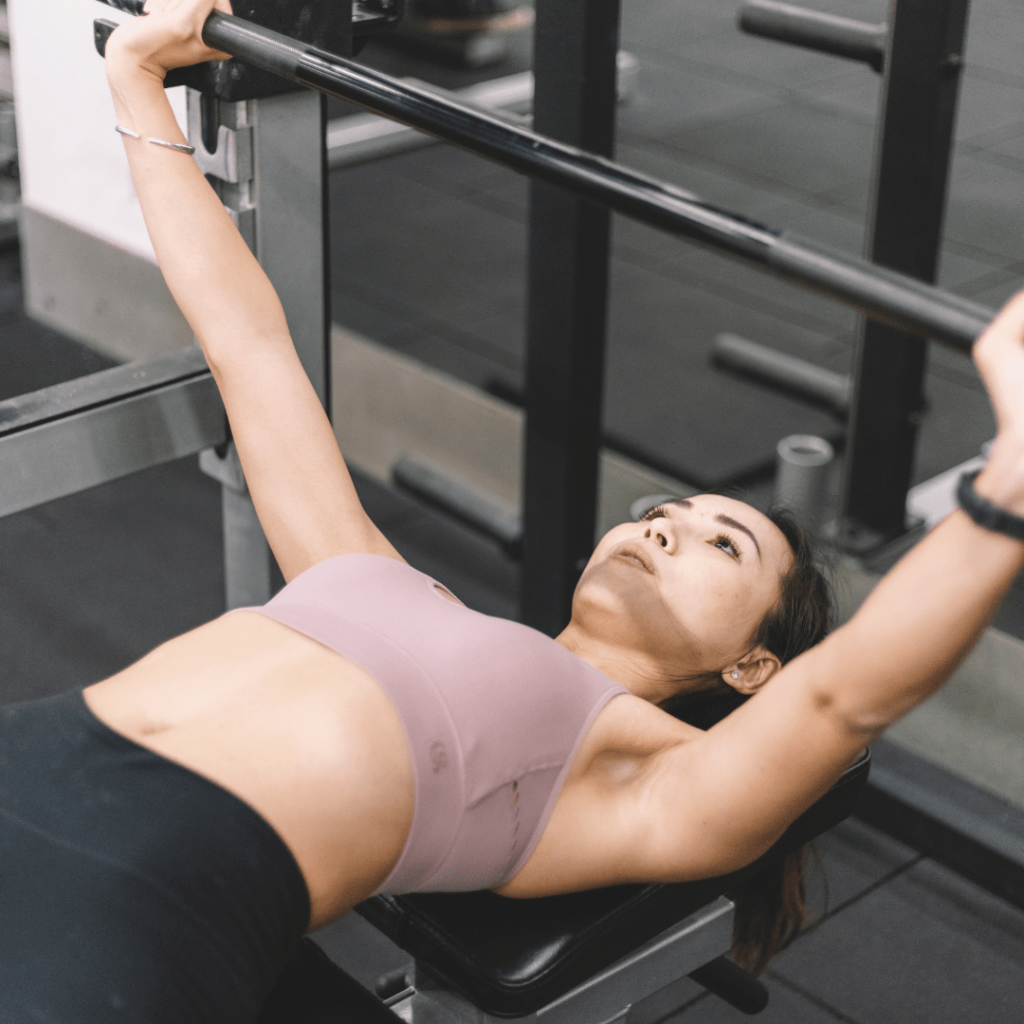
Barbell bench press is really an art form. Place your feet firmly on the floor, have your grip about shoulder-width apart, ask someone for a good lift off so you do not have to reach back and put unwanted strain on your shoulders, and lower the weight down to your chest in a controlled manner. Do not do the bench press bounce like some do where they let the bar bounce off of their chest for every rep. They are using momentum to assist them when doing this instead of using pure strength. It is perfectly fine to arch your back a bit as your shoulders are pinned to the bench. Just don’t go overboard and make it seem like you are auditioning for a limbo contest in your near future.
Squats
Research and science show that if you want your legs to grow, you should be doing squats. It is the number one muscle-building leg exercise according to the findings. In fact, it basically trains everything from the chest down. Not a bad payoff for just one exercise.
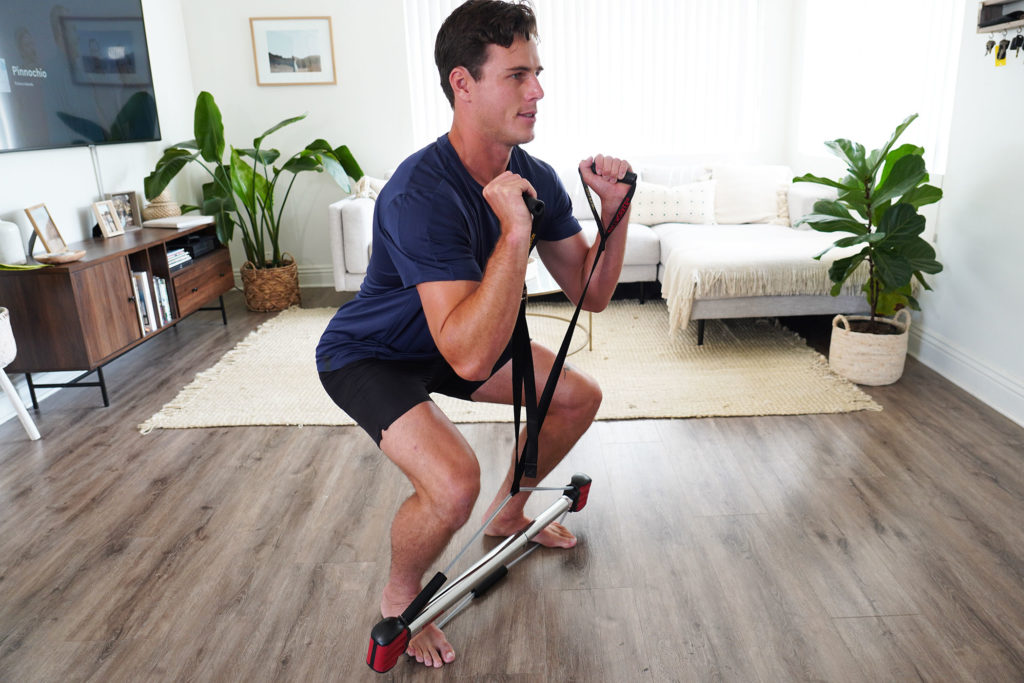
Get more work done with each squat when you utilize the Bow Classic & ISO-FLO.
If you are looking to get bigger legs, it is a good idea to pyramid your sets while doing squats. This means that you might do ten reps for the first set at a low weight/resistance, but then after that, add additional weight/resistance for each set and lower the number of reps you are doing. Your final set might only be two or three reps, but they will build solid muscle. It is fine to try for one-rep max lifts every now and then, but don’t do it too often. You are putting yourself at risk for an injury whenever you do ego-lifting.
Bent-Over Barbell Row
The bent-over barbell row is another exercise that is not performed enough in gyms across the globe. It is an isotonic compound movement that trains the whole back, including traps and lats, but also biceps and shoulders.

When doing this exercise, have your knees slightly bent, feet shoulder-width apart, decide whether you want an underhand or overhand grip, choose the width you are going to place your hands on the bar (some go wide and some go more narrow), keep your back straight as you bend over at the waist, and it is a good idea to keep your head down a bit so it lines up with the whole spine.
Pull-Ups
Pull-ups keep constant tension on muscles throughout the movement and are another isotonic compound strength training exercise that provides plenty of bang for your buck. It trains your back, biceps, forearms, core, and if you ever wanted those lats that look like wings, this is your go-to movement.
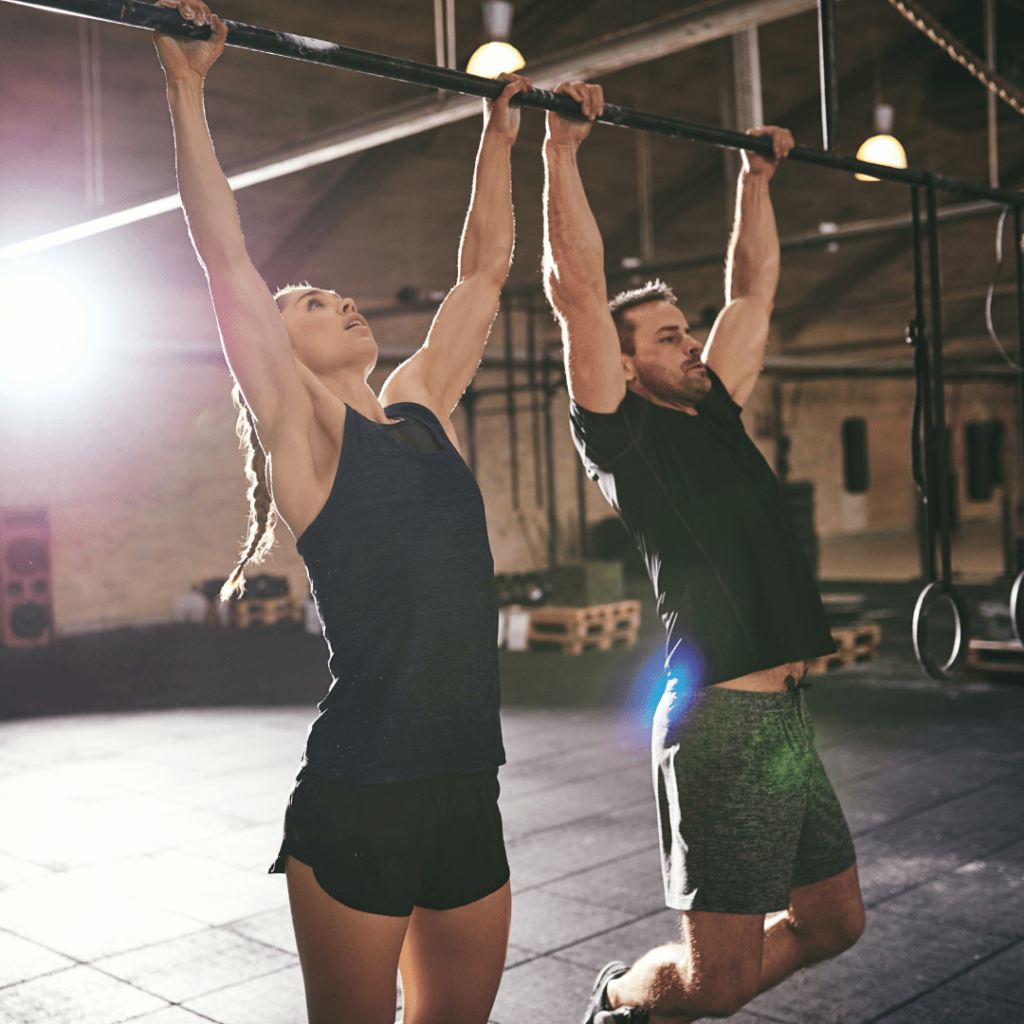
The issue with pull-ups is that people get discouraged because they can only perform a couple of them when first starting out. But just like everything else in life, the more you do it, the better you get. When doing a pull-up, try to keep the rocking movement to a minimum, concentrate on the grip, activate your core, and keep going until you can’t do anymore. If you need assistance, use a band or something similar that will provide a little boost as you need it to squeeze out as many reps as possible.
At Home or in a Gym
As you were reading through all of these compound isotonic strength exercises, you probably were imagining yourself at the local gym doing these in front of the mirror while working up a good sweat. However, many of these can be completed at home in the comfort of your little (or not so little) home gym.
As you noticed, you really don’t need much of the equipment the commercial gyms have to do these exercises. Besides, many of those fancy pieces at the gym are more or less for isolated exercises that focus on only one muscle group at a time. We want compound movements!
A basic home gym of a few of items are really all you need!
Pull-Up Bar: The pull-up bar can be used for a variety of isotonic compound exercises. Chin-ups, leg raises, knee raises, knees to elbows, and, of course, the pull-up.
ISO-FLO: With the ISO-FLO, you are only limited to the number of exercises you can do by your creativity. Seated rows, bent-over rows, upright rows, and shoulder presses are just a few of the isotonic compound exercises that will keep resistance on your muscles.
Universal Rack or Power Pack: Do you need a squat rack to do squats and deadlifts? No. But having one in your home gym will make adding plates and racking the weight a whole lot easier.
Conclusion: Work Out Smart and Hard
Too many people enter the weight room without a solid plan in mind. That is why you see people curling in the squat rack. If you want to make solid gains, it involves approaching training smartly. Still, you must work hard as well as gaining muscle mass is not an easy thing.
Through isotonic exercises, where constant tension is placed on the muscle as it shortens and lengthens, you are going to make progress. And when you plan to use a majority of compound movements that are also isotonic exercises, you are setting yourself up for success by using science and hard work accomplishing your goals in less time.